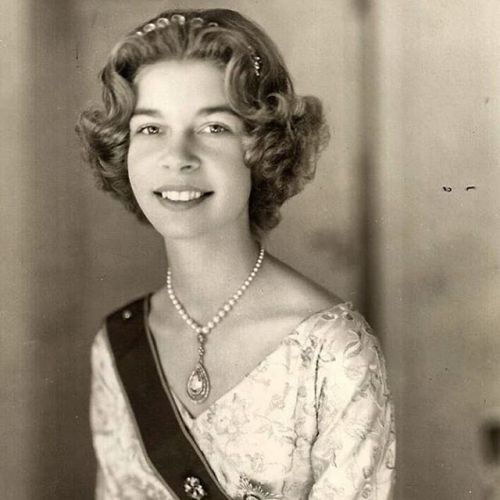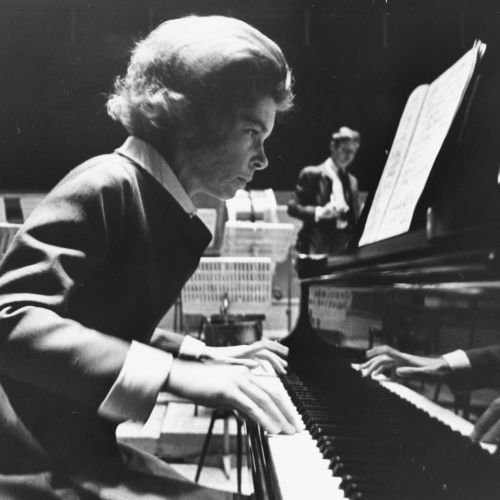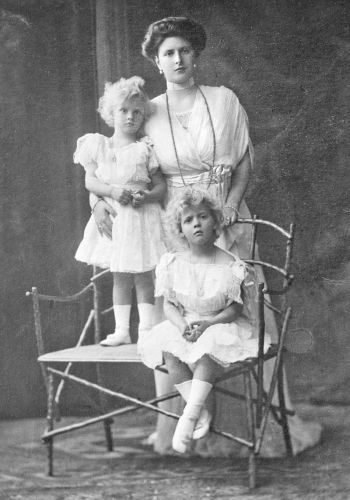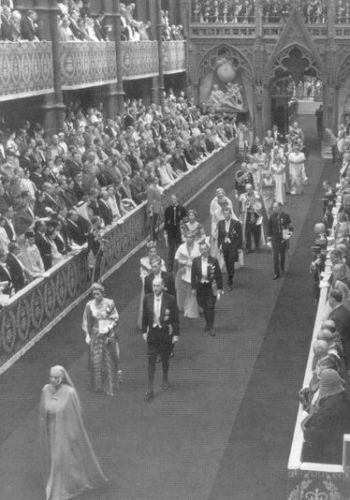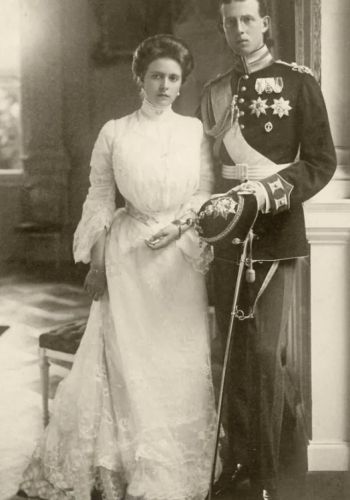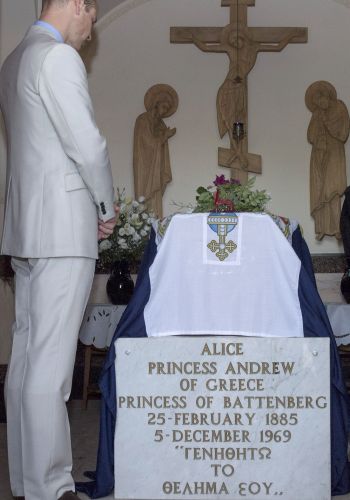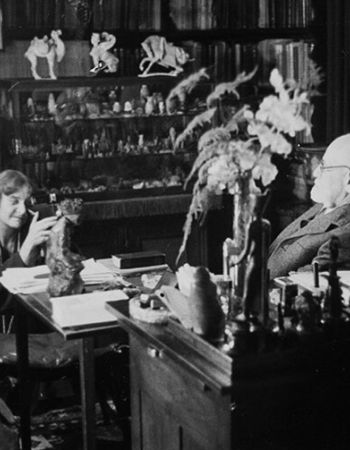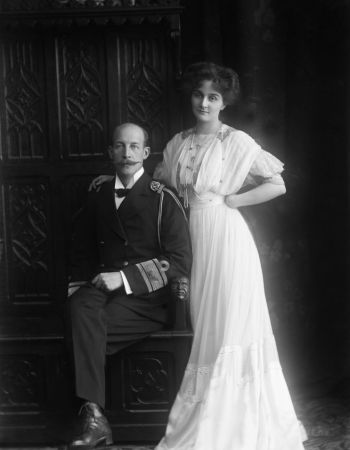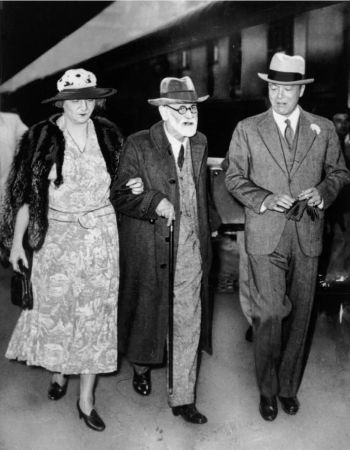Princesses of Greece
The women of the Greek Royal Family have always had a wide range of responsibilities.
Their multi-faceted activities extended to all social sectors, ranging from healthcare to education, environmental protection to maintenance of cultural heritage.
The Princesses of Greece participated in all major historical, social, cultural as well as scientific events of their times and many of them have served as role models and played a decisive role in shaping the modern Greek State.
There follows a succinct presentation of the work of five Princesses of the Greek Royal Family :
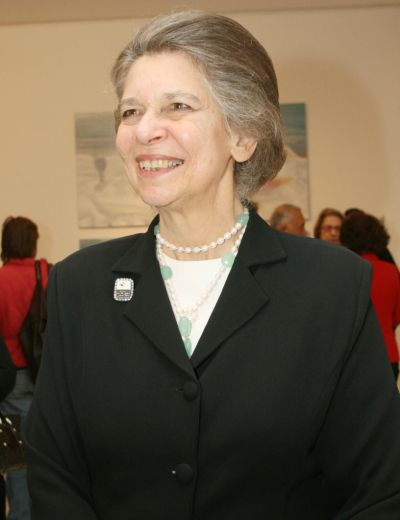
Princess Irene
Princess Irene of Greece is the third child of King Pavlos and Queen Frederica, a sister to the late King Konstantine II and Queen Sophia of Spain. She was born in Cape Town of South Africa on 11 May 1942, her god-father being General Jan Smuts, the then President of the South African Legion.
A graduate of Salem in Germany, she followed a pianist career by the famous Gina Bahaower. She later completed her studies in Archaeology under the guidance of Theophano Arvanitopoulou. In 1960 she co-published, along with her sister Sophia and Theophano Arvanitopoulou, the work titled “Archaeological Digest”. She was Heir to the Greek Throne from 6 March 1964, until 10 July 1965 (date of birth of her niece HRH Princess Alexia).
She was Head of the Corps of Greek Girl Scouts.
Social work in Greece
Through her Foundation “World In Harmony – Mundo En Armonia” she has developed community involvement in Greece since 2003, when the Greek Royal Family returned to the country, and has supported many and disparate social groups.
“Gina Bachauer” Scholarships (in cooperation with the Stavros Niarchos Foundation): The “Mundo En Armonia” Foundation, assisted by the Friends of the Music Society, offered scholarships to young musicians. The latter have had the opportunity to study alongside the best musicians and thus promote their music career.
Greek community kitchens & families in distress: The “Mundo En Armonia” Foundation, in collaboration with the Foundation “Galene” and the Bodossaki Foundation, distributed food to 400 persons approximately on a daily basis in the Athens center, through its community kitchen. The “Mundo En Armonia” also collaborated in a feeding programme covering the needs of 60 children each weekend. Moreover, the Foundation offers food to various schools in Athens.
Roma community (in cooperation with Coca-Cola Tria Epsilon). The Foundation has assisted children of the Roma community, offering sandwiches and packs of juice to the Aspropyrgos 12th & 7th Elementary Schools. It also offered dance lessons in parallel, an extra-curriculum activity that took place every week.
The Foundation has also collaborated with the Diocese of Florina in the reconstruction of a student dormitory and a Seniors’ Day Center, following the aftermath of the seismic activity in the area, and offered school supplies to the children of the Cathedral’s playground. It has also helped Greek refugees repatriated from Russia, offered financial assistance to the school for impaired students in Verhea and, in cooperation with the Archdiocese of Athens, offered financial assistance and relief to the victims of the September 7 earthquake.
Quoting Princess Irene from an interview granted to Stavros Theodorakis in the emission “Protagonistes” [“Leading actors”] in 2010, her share of the damages paid by the Greek State for the confiscation of the royal property was distributed to the Greek relief programs, because “we can serve the world, and this is how History evolves, but through another way, in private”.
Princess Irene

Princess Irene of Greece is the third child of King Pavlos and Queen Frederica, a sister to the late King Konstantine II and Queen Sophia of Spain. She was born in Cape Town of South Africa on 11 May 1942, her god-father being General Jan Smuts, the then President of the South African Legion.
A graduate of Salem in Germany, she followed a pianist career by the famous Gina Bahaower. She later completed her studies in Archaeology under the guidance of Theophano Arvanitopoulou. In 1960 she co-published, along with her sister Sophia and Theophano Arvanitopoulou, the work titled “Archaeological Digest”. She was Heir to the Greek Throne from 6 March 1964, until 10 July 1965 (date of birth of her niece HRH Princess Alexia).
She was Head of the Corps of Greek Girl Scouts.
Social work in Greece
Through her Foundation “World In Harmony – Mundo En Armonia” she has developed community involvement in Greece since 2003, when the Greek Royal Family returned to the country, and has supported many and disparate social groups.
“Gina Bachauer” Scholarships (in cooperation with the Stavros Niarchos Foundation): The “Mundo En Armonia” Foundation, assisted by the Friends of the Music Society, offered scholarships to young musicians. The latter have had the opportunity to study alongside the best musicians and thus promote their music career.
Greek community kitchens & families in distress: The “Mundo En Armonia” Foundation, in collaboration with the Foundation “Galene” and the Bodossaki Foundation, distributed food to 400 persons approximately on a daily basis in the Athens center, through its community kitchen. The “Mundo En Armonia” also collaborated in a feeding programme covering the needs of 60 children each weekend. Moreover, the Foundation offers food to various schools in Athens.
Roma community (in cooperation with Coca-Cola Tria Epsilon). The Foundation has assisted children of the Roma community, offering sandwiches and packs of juice to the Aspropyrgos 12th & 7th Elementary Schools. It also offered dance lessons in parallel, an extra-curriculum activity that took place every week.
The Foundation has also collaborated with the Diocese of Florina in the reconstruction of a student dormitory and a Seniors’ Day Center, following the aftermath of the seismic activity in the area, and offered school supplies to the children of the Cathedral’s playground. It has also helped Greek refugees repatriated from Russia, offered financial assistance to the school for impaired students in Verhea and, in cooperation with the Archdiocese of Athens, offered financial assistance and relief to the victims of the September 7 earthquake.
Quoting Princess Irene from an interview granted to Stavros Theodorakis in the emission “Protagonistes” [“Leading actors”] in 2010, her share of the damages paid by the Greek State for the confiscation of the royal property was distributed to the Greek relief programs, because “we can serve the world, and this is how History evolves, but through another way, in private”.
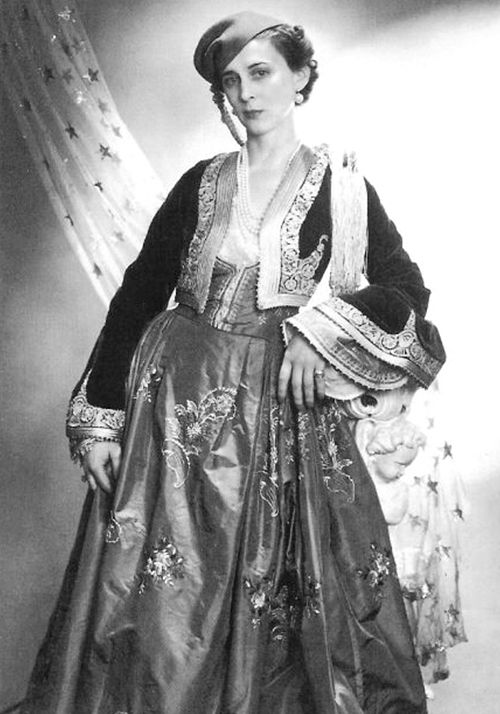
Princess Marina
Princess Marina of Greece (she was named after Sainte Marina) was born on December 13, 1906, and was the daughter of Prince Nicholas and the Great Dutchess Helena Vladimirova of Russia. Her Godmother was Queen Mary, Queen Elisabeth’s grand-mother, while Prince Phillip was her first cousin. She lived at Tatoi until her 11 years, when she followed the whole royal family into exile after the toppling of the regime. In 1932, Marina met in London Prince George, son of the King of England. Two years later, they got married in Westminster Abbey.
She introduced style in the British Court
Princess Marina had a unique style, she was dynamic, an artistic nature, proud and inaccessible.
She married the Duke of Kent, son of the King of England, and had together three children, amongst them Michael, one of the most beloved cousins of Queen Elisabeth. Soon the couple became British Media’s favourite. Their wedding ceremony took place on 29 November 1934 in Westminster Abbey and was the first royal event to be broadcasted live on the radio, the late Queen Elisabeth serving as lady of honour. The bride asked the guests to deposit their wedding gifts money to unemployment benefit accounts.
Princess Marina was the favourite of the British Media and the fashion world.
English women started imitating her style, wearing trousers because she did and following closely her life. Times have praised her “for her warm heart and gentle nature”.
She died in 1968, her casket covered with the Greek flag.
Princess Marina

Princess Marina of Greece (she was named after Sainte Marina) was born on December 13, 1906, and was the daughter of Prince Nicholas and the Great Dutchess Helena Vladimirova of Russia. Her Godmother was Queen Mary, Queen Elisabeth’s grand-mother, while Prince Phillip was her first cousin. She lived at Tatoi until her 11 years, when she followed the whole royal family into exile after the toppling of the regime. In 1932, Marina met in London Prince George, son of the King of England. Two years later, they got married in Westminster Abbey.
She introduced style in the British Court
Princess Marina had a unique style, she was dynamic, an artistic nature, proud and inaccessible.
She married the Duke of Kent, son of the King of England, and had together three children, amongst them Michael, one of the most beloved cousins of Queen Elisabeth. Soon the couple became British Media’s favourite. Their wedding ceremony took place on 29 November 1934 in Westminster Abbey and was the first royal event to be broadcasted live on the radio, the late Queen Elisabeth serving as lady of honour. The bride asked the guests to deposit their wedding gifts money to unemployment benefit accounts.
Princess Marina was the favourite of the British Media and the fashion world.
English women started imitating her style, wearing trousers because she did and following closely her life. Times have praised her “for her warm heart and gentle nature”.
She died in 1968, her casket covered with the Greek flag.
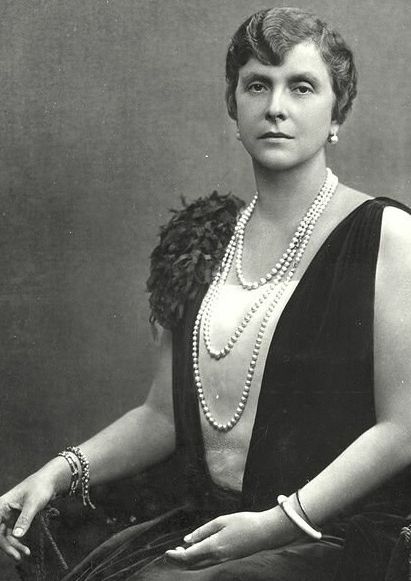
Princess Alice
Princess Alice of Baddenberg was born on 25 February 1885 in the Castle of Windsor and she was the first-born child of Ludvig of Baddenberg and Victoria of Esse, grand-daughter of Queen Victoria of United Kingdom.
She married Prince Andreas of Greece on 6 October 1903 and had five children together, amongst them Prince Philip Duke of Edinburgh, spouse of Queen Elisabeth B’.
She died in 1969 in Buckingham Palace and, following her expressed wish, she was buried in Maria Magdalena church, in Jerusalem.
After the family’s exile from Greece in 1922 and her settling in Paris, she manifested a mental disease and was admitted to doctor Simmel’s institution, on the advice of her psychoanalyst Princess Marie Bonaparte. Simmel’s diagnosis had Alice suffering from paranoid schizophrenia. In 1932 she showed signs of improvement and when her condition was stabilised she moved to Germany.
In 1938 Princess Alice returned to Greece for the first time after her fleeing in 1922 and settled in Athens, at Koumbari street.
When the 2nd World War broke out, Alice remained in Athens along with Princess Helena of Nicholas in order to help the Greeks in those dire circumstances.
The offering during Occupation
Her difficult life, the hardships and the mental disease did not bend Alice’s personality, quite the contrary; they fortified her character, gave her force, stamina and self-denial for the good cause.
Alice took over the organization of one of the biggest soup kitchens in Athens. She worked daily so as to offer to starving children as much food as she could secure and would then share the left-overs with their hungry parents.
The first winter of the Occupation was tragic. Princess Alice lost twenty-six kilos at the time, a proof that she, too, suffered along with the rest of the Greek people.
In October of 1943 Princess Alice hid a Jewish family in her house; an act both brave and extremely dangerous, for which she later received honours.
Alice kept on working on a daily basis at the children’s soup kitchens. Additionally, however, she had now took over two asylums for deserted and orphaned children, one for boys and one for girls, and she had also placed nurses offering home care to destitute people in poor neighbourhoods of Athens.
Her niece, Queen-Mother Helen of Romania, saw to it to send her some food whenever she could, to keep her sustained.
She wrote to her son Philip in October of 1943: “I am almost identical as I used to be, bar the twenty-six kilos I lost two years ago which I fortunately did not gain back. You will be pleasantly surprised when you see me again with a descent attire, it is just my face that has more wrinkles”.
In January 1949, Princess Alice founded a Nursing Order of Greek Orthodox nuns, the Christian Sorority of Martha and Maria. She founded a house for the Order in a little village, north of Athens, and carried out two fund-raising tours in the USA, in 1950 and 1952, in an effort to gather money for her good cause, since the whole of her personal property was spent on the projects she had carried out.
On the day of Queen Elisabeth’s coronation in 1953, Alice heads her family in Westminster Abbey in her monastic garb.
When the Colonels’ coup broke up in Greece in 1967, Alice left for England where she stayed, originally in Windsor Castle and then in Buckingham Palace.
On 11 April 1963 Alice was awarded the title of the Righteous Among the Nations for the act of putting her life in danger in order to save the lives of Jews. In October 1944 her children, Philip and Sophia, went to Jerusalem to receive the medal. Prince Philip said in his acceptance speech: “As far as we know, she never mentioned to anyone that she had offered shelter to the Kohen family, at a time when Jews were persecuted all over Greece and were in danger of arrest and transfer to the concentration camps. I reckon she never thought and she obviously considered this was an ordinary human act which helped some of her fellow human beings in their time of distress”.
Princess Alice

Princess Alice of Baddenberg was born on 25 February 1885 in the Castle of Windsor and she was the first-born child of Ludvig of Baddenberg and Victoria of Esse, grand-daughter of Queen Victoria of United Kingdom.
She married Prince Andreas of Greece on 6 October 1903 and had five children together, amongst them Prince Philip Duke of Edinburgh, spouse of Queen Elisabeth B’.
She died in 1969 in Buckingham Palace and, following her expressed wish, she was buried in Maria Magdalena church, in Jerusalem.
After the family’s exile from Greece in 1922 and her settling in Paris, she manifested a mental disease and was admitted to doctor Simmel’s institution, on the advice of her psychoanalyst Princess Marie Bonaparte. Simmel’s diagnosis had Alice suffering from paranoid schizophrenia. In 1932 she showed signs of improvement and when her condition was stabilised she moved to Germany.
In 1938 Princess Alice returned to Greece for the first time after her fleeing in 1922 and settled in Athens, at Koumbari street.
When the 2nd World War broke out, Alice remained in Athens along with Princess Helena of Nicholas in order to help the Greeks in those dire circumstances.
The offering during Occupation
Her difficult life, the hardships and the mental disease did not bend Alice’s personality, quite the contrary; they fortified her character, gave her force, stamina and self-denial for the good cause.
Alice took over the organization of one of the biggest soup kitchens in Athens. She worked daily so as to offer to starving children as much food as she could secure and would then share the left-overs with their hungry parents.
The first winter of the Occupation was tragic. Princess Alice lost twenty-six kilos at the time, a proof that she, too, suffered along with the rest of the Greek people.
In October of 1943 Princess Alice hid a Jewish family in her house; an act both brave and extremely dangerous, for which she later received honours.
Alice kept on working on a daily basis at the children’s soup kitchens. Additionally, however, she had now took over two asylums for deserted and orphaned children, one for boys and one for girls, and she had also placed nurses offering home care to destitute people in poor neighbourhoods of Athens.
Her niece, Queen-Mother Helen of Romania, saw to it to send her some food whenever she could, to keep her sustained.
She wrote to her son Philip in October of 1943: “I am almost identical as I used to be, bar the twenty-six kilos I lost two years ago which I fortunately did not gain back. You will be pleasantly surprised when you see me again with a descent attire, it is just my face that has more wrinkles”.
In January 1949, Princess Alice founded a Nursing Order of Greek Orthodox nuns, the Christian Sorority of Martha and Maria. She founded a house for the Order in a little village, north of Athens, and carried out two fund-raising tours in the USA, in 1950 and 1952, in an effort to gather money for her good cause, since the whole of her personal property was spent on the projects she had carried out.
On the day of Queen Elisabeth’s coronation in 1953, Alice heads her family in Westminster Abbey in her monastic garb.
When the Colonels’ coup broke up in Greece in 1967, Alice left for England where she stayed, originally in Windsor Castle and then in Buckingham Palace.
On 11 April 1963 Alice was awarded the title of the Righteous Among the Nations for the act of putting her life in danger in order to save the lives of Jews. In October 1944 her children, Philip and Sophia, went to Jerusalem to receive the medal. Prince Philip said in his acceptance speech: “As far as we know, she never mentioned to anyone that she had offered shelter to the Kohen family, at a time when Jews were persecuted all over Greece and were in danger of arrest and transfer to the concentration camps. I reckon she never thought and she obviously considered this was an ordinary human act which helped some of her fellow human beings in their time of distress”.

Princess Maria Bonaparte
Marie Bonaparte (July 2, 1882 – September 21, 1962) of the Bonaparte House, was a French psychoanalyst. She was the niece of Napoleon I of France.
She married at the age of 25 Prince George of Greece, in a civil marriage on November 21, 1907, in Paris, and in a religious ceremony held in Athens on December 12, 1907. She was known ever since as "Princess George of Greece”.
She died in 1962 and was buried in the Royal Cemetery at Tatoi.
Scientific work
Marie Bonaparte was not merely a princess of the Greek Royal Family or a wealthy heiress. She was a woman with a multi-faceted personality who helped thousands of women, through her scientific work, to get emancipated and come to grips with themselves, beyond the cast roles of the lover, spouse and mother.
She had been both a patient and student of Froyd and a passionate fan of the revolutionary method of psychoanalysis. Her life consisted of travels, persistent reading, study rooms full of books and incessant research on human psychological profiles. She was acquainted to and associated with the most important people of her era and was a witness to the birth of Psychoanalysis, at the beginning of the 20th century.
She was one of the nine founding members of the Société Psychanalytique de Paris and in 1927 she was the sponsor of the first French psychoanalytic journal, the “Revue française de Psychanalyse”.
In 1938, thanks to her diplomatic connections, Marie Bonaparte helped Froyd and his family flee Nazi Austria, also paying the enormous “ransom” the Nazis demanded in order to let him leave the country.
Her father bequeathed her the intellectual curiosity and love for learning as well as the emotional detachment and lack of tenderness. Her childhood left an indelible mark on her emotional and mental state, not allowing her to live a care-free life full of luxury and comfort, but led her instead to the court of the then revolutionary Froyd and established her as a symbol of her era and one of the most famous psychoanalysts in Europe.
Princess Maria Bonaparte

Marie Bonaparte (July 2, 1882 – September 21, 1962) of the Bonaparte House, was a French psychoanalyst. She was the niece of Napoleon I of France.
She married at the age of 25 Prince George of Greece, in a civil marriage on November 21, 1907, in Paris, and in a religious ceremony held in Athens on December 12, 1907. She was known ever since as “Princess George of Greece”.
She died in 1962 and was buried in the Royal Cemetery at Tatoi.
Scientific work
Marie Bonaparte was not merely a princess of the Greek Royal Family or a wealthy heiress. She was a woman with a multi-faceted personality who helped thousands of women, through her scientific work, to get emancipated and come to grips with themselves, beyond the cast roles of the lover, spouse and mother.
She had been both a patient and student of Froyd and a passionate fan of the revolutionary method of psychoanalysis. Her life consisted of travels, persistent reading, study rooms full of books and incessant research on human psychological profiles. She was acquainted to and associated with the most important people of her era and was a witness to the birth of Psychoanalysis, at the beginning of the 20th century.
She was one of the nine founding members of the Société Psychanalytique de Paris and in 1927 she was the sponsor of the first French psychoanalytic journal, the “Revue française de Psychanalyse”.
In 1938, thanks to her diplomatic connections, Marie Bonaparte helped Froyd and his family flee Nazi Austria, also paying the enormous “ransom” the Nazis demanded in order to let him leave the country.
Her father bequeathed her the intellectual curiosity and love for learning as well as the emotional detachment and lack of tenderness. Her childhood left an indelible mark on her emotional and mental state, not allowing her to live a care-free life full of luxury and comfort, but led her instead to the court of the then revolutionary Froyd and established her as a symbol of her era and one of the most famous psychoanalysts in Europe.
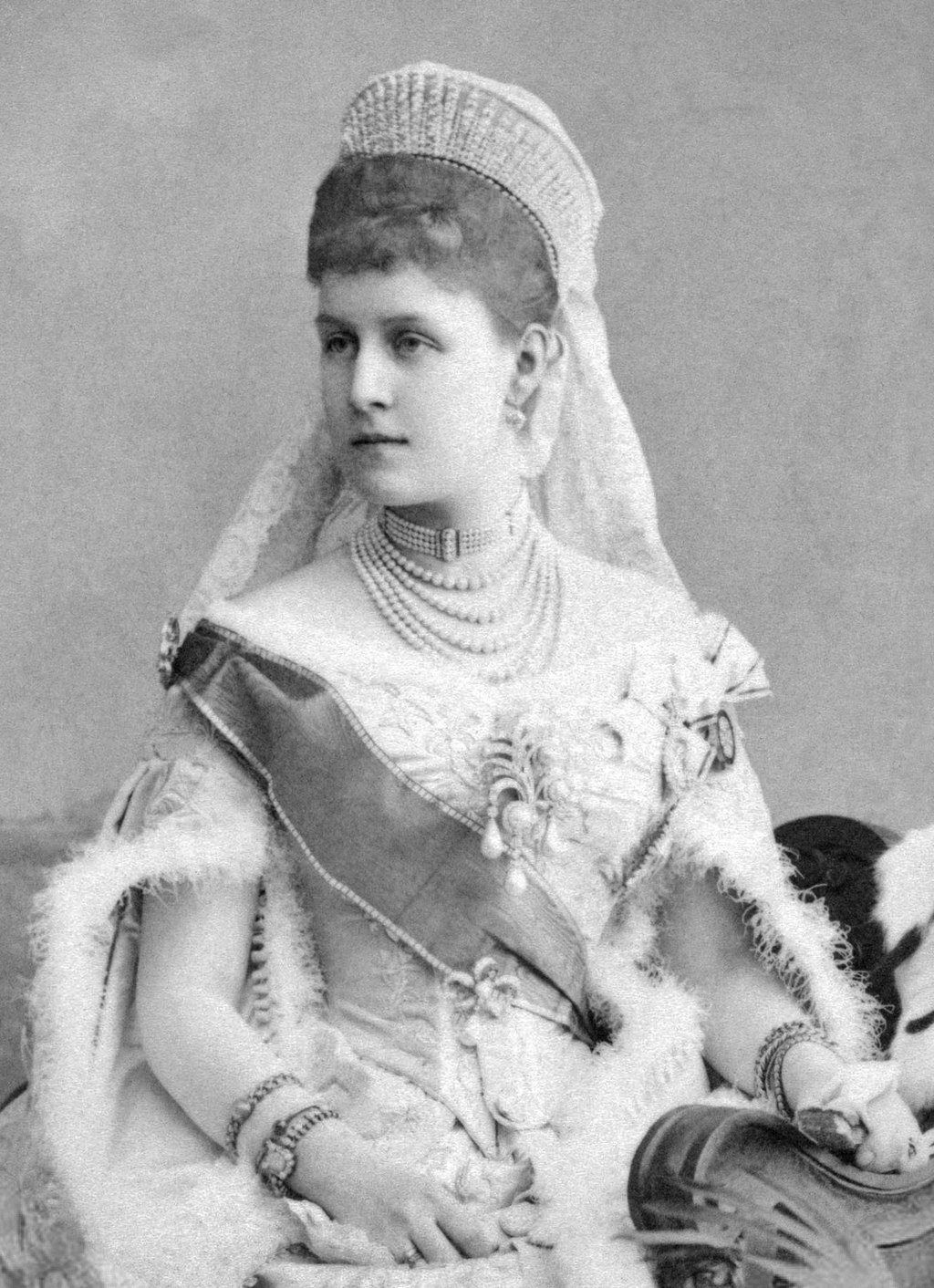
Princess Alexandra
Princess Alexandra of Greece was born on 30 August 1870 in Corfu. She was the third child of King George A’ and Queen Olga of the Greeks. She got married in 1889 to Pavlos Alexandrovitch of Russia, son of Alexander B’ of Russia and got settled in Saint Petersburg.
While being in the seventh month of her pregnancy, she fell in the water and the day after she collapsed with intense labour pains. She gave birth to her son Dmitri and six days later she passed away at the age of 21.
The news of her death plunged into mourning her family, as well as the whole of Greek society.
“All public establishments, quasi all houses, companies, banks, charity shops, the University, the Library under construction, the hotels, wherever lay a house or a hut with a flag, they bore it at half mast, with a picture of the young princess and a candle burning next to it, along with the smoke of some incense”, the newspaper Acropolis wrote on 14 September 1891.
She was buried in Saints Peter and Paul Cathedral in Saint Petersburg.
In 1939 her nephew King George B’ asked the USSR to have her bones transferred to Greece so as to burry them in Tatoi, next to her parents. Stalin gave his permission and the burial ceremony was held in January 1940, following the burial of her brother Prince Christopher.
The short-lived Princess honoured as no other
The following venues were named after her
- Alexandra Avenue in Athens
- Alexandra Square in Piraeus (“Passalimani”)
- Alexandra Avenue in Corfu
- Alexandra Maternity Hospital (with special competence on conducting research and fighting post-partum maternal mortality).
Princess Alexandra

Princess Alexandra of Greece was born on 30 August 1870 in Corfu. She was the third child of King George A’ and Queen Olga of the Greeks. She got married in 1889 to Pavlos Alexandrovitch of Russia, son of Alexander B’ of Russia and got settled in Saint Petersburg.
While being in the seventh month of her pregnancy, she fell in the water and the day after she collapsed with intense labour pains. She gave birth to her son Dmitri and six days later she passed away at the age of 21.
The news of her death plunged into mourning her family, as well as the whole of Greek society.
“All public establishments, quasi all houses, companies, banks, charity shops, the University, the Library under construction, the hotels, wherever lay a house or a hut with a flag, they bore it at half mast, with a picture of the young princess and a candle burning next to it, along with the smoke of some incense”, the newspaper Acropolis wrote on 14 September 1891.
She was buried in Saints Peter and Paul Cathedral in Saint Petersburg.
In 1939 her nephew King George B’ asked the USSR to have her bones transferred to Greece so as to burry them in Tatoi, next to her parents. Stalin gave his permission and the burial ceremony was held in January 1940, following the burial of her brother Prince Christopher.
The short-lived Princess honoured as no other
The following venues were named after her
- Alexandra Avenue in Athens
- Alexandra Square in Piraeus (“Passalimani”)
- Alexandra Avenue in Corfu
- Alexandra Maternity Hospital (with special competence on conducting research and fighting post-partum maternal mortality).
